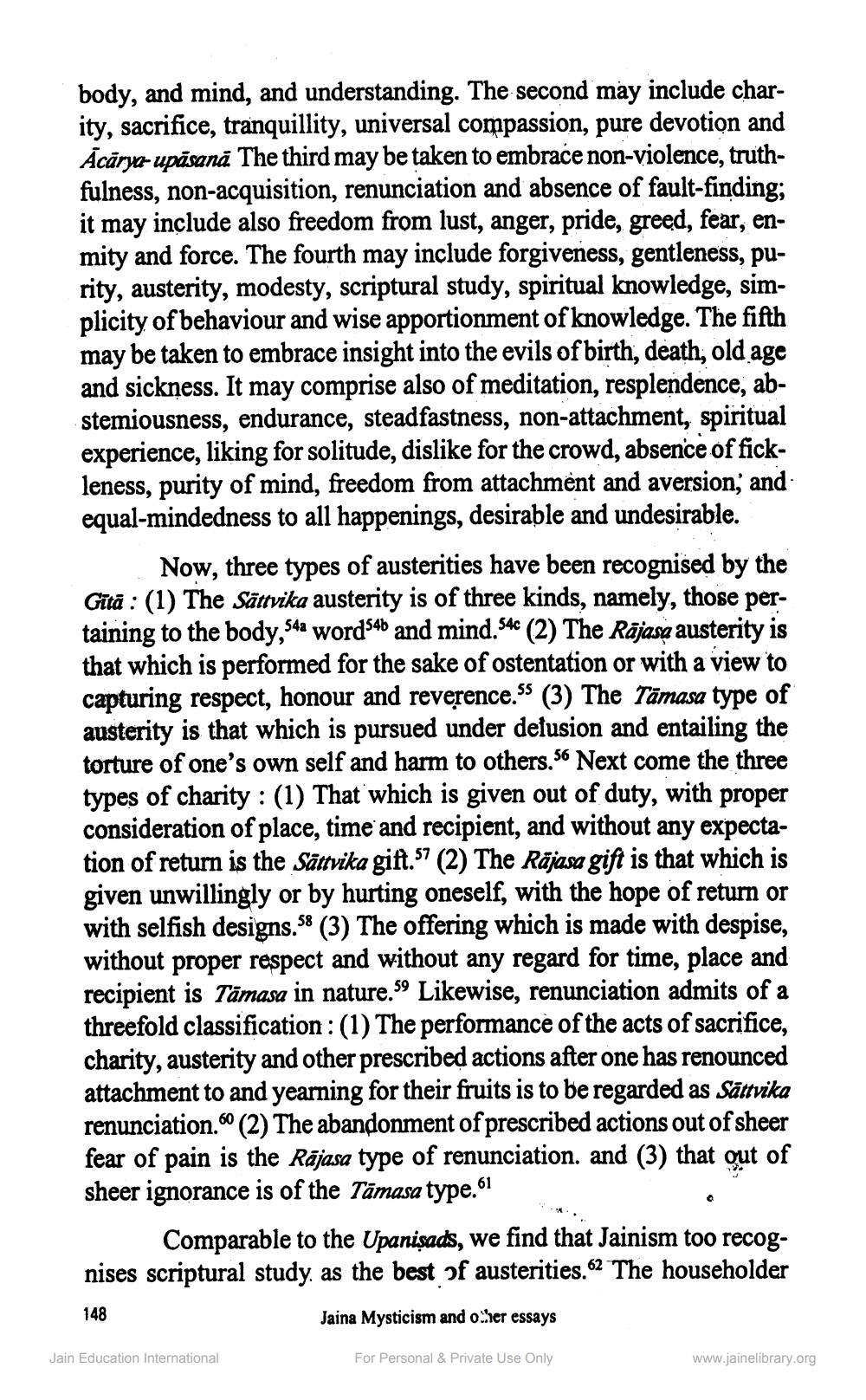________________
body, and mind, and understanding. The second may include charity, sacrifice, tranquillity, universal compassion, pure devotion and Acārya-upāsanā. The third may be taken to embrace non-violence, truthfulness, non-acquisition, renunciation and absence of fault-finding; it may include also freedom from lust, anger, pride, greed, fear, enmity and force. The fourth may include forgiveness, gentleness, purity, austerity, modesty, scriptural study, spiritual knowledge, simplicity of behaviour and wise apportionment of knowledge. The fifth may be taken to embrace insight into the evils of birth, death; old age and sickness. It may comprise also of meditation, resplendence, abstemiousness, endurance, steadfastness, non-attachment, spiritual experience, liking for solitude, dislike for the crowd, absence of fickleness, purity of mind, freedom from attachment and aversion, and equal-mindedness to all happenings, desirable and undesirable.
Now, three types of austerities have been recognised by the Gita : (1) The Sättvika austerity is of three kinds, namely, those pertaining to the body, 54a word54b and mind. S4C (2) The Rajasa austerity is that which is performed for the sake of ostentation or with a view to capturing respect, honour and reverence.SS (3) The Tāmasa type of austerity is that which is pursued under delusion and entailing the torture of one's own self and harm to others. 56 Next come the three types of charity :(1) That which is given out of duty, with proper consideration of place, time and recipient, and without any expectation of return is the Sättvika gift. 57 (2) The Rajasa gift is that which is given unwillingly or by hurting oneself, with the hope of return or with selfish designs. 58 (3) The offering which is made with despise, without proper respect and without any regard for time, place and recipient is Tāmasa in nature.59 Likewise, renunciation admits of a threefold classification:(1) The performance of the acts of sacrifice, charity, austerity and other prescribed actions after one has renounced attachment to and yearning for their fruits is to be regarded as Sättvika renunciation. (2) The abandonment of prescribed actions out of sheer fear of pain is the Rājasa type of renunciation. and (3) that out of sheer ignorance is of the Tāmasa type.
Comparable to the Upanişads, we find that Jainism too recognises scriptural study, as the best of austerities.62 The householder
148
Jaina Mysticism and ocher essays
Jain Education International
For Personal & Private Use Only
www.jainelibrary.org




